Spinner Fishing For Trout: Best Tactics and Tips From Guides
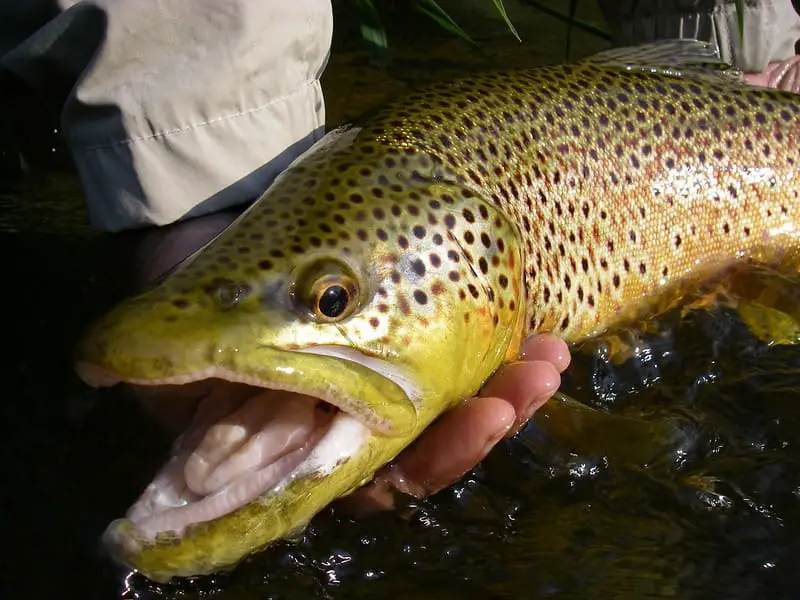
Experienced anglers and trout guides have known for a long time that spinner fishing for trout. Guides often use very effective techniques, with some that are not as well known.
As a guide, I’ll share my most effective methods and some tips for trout fishing with spinners. I’ve been perfecting these methods over 22 years of guiding and 37 years of trout fishing.
Key Things Are:
- The most effective spinners.
- The most effective colors.
- Lure size.
- How to determine the depth you should be fishing.
- Covering the water effectively.
- Lure selection is based on conditions.
- Proper presentation for different water conditions.
- How to increase the effectiveness of your spinner to trigger more bites.
Are Spinners Good For Trout?
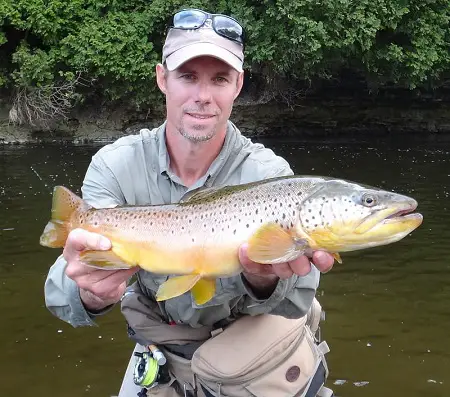
Spinners are highly effective lures when fishing for trout in rivers, lakes, and ponds, and often spinners that are fished well can be the most effective lure, and at times, spinners can be even better than my most effective trout baits.
Anglers and fishing guides across the United States and Canada widely use spinners with great success.
Even anglers who are not experienced with spinner fishing can still have a good chance of catching trout.
When fishing for trout with spinners, I consider factors such as river conditions, depth, water clarity, current speed, and trout activity level. As a guide, determining the most suitable spinner based on the conditions is critical to my client’s success.
Advantages of Spinner Fishing for Trout
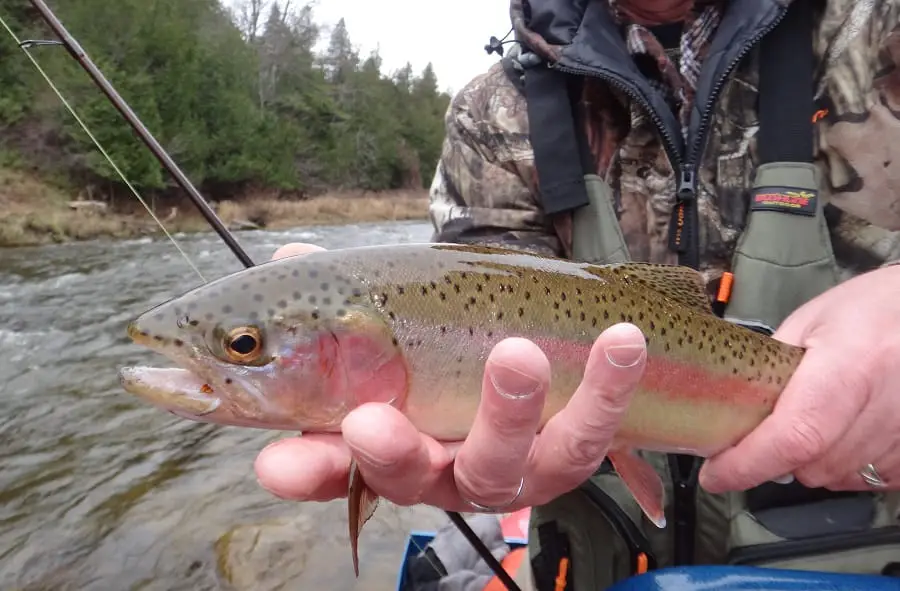
Spinner fishing offers several advantages when targeting trout. Spinners can replicate the vibration and flash of baitfish, effectively triggering a strike response from trout.
Spinners also allow me to cover a large area of water quickly and target multiple depths. These features make spinners a favored choice among anglers and guides.
Basics of Catching Trout With Spinners
Trout fishing with spinners involves using a type of lure known as a spinner. A spinner consists of a spinning spoon-shaped blade attached to a shaft with a single or treble hook.
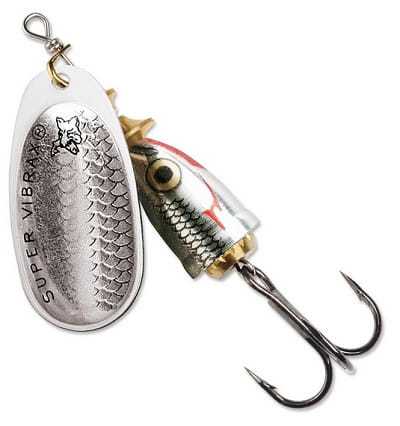
This type of spinner is also referred to as an in-line spinner.
Spinners produce vibrations and flashes that attract trout effectively. However, not all spinners are suitable for trout fishing, and certain spinners work better than others.
Choosing the right size, color, and weight of spinners is crucial.
It is also important to use high-quality spinners that can withstand the fight with a large trout.
Recommended Spinners for Trout Fishing: When selecting spinners for trout fishing, consider the following options:

- Mepps Aglia: Mepps spinners, particularly in size #1 to #3 blades, are one of the most popular spinners for trout fishing. The reason is that they are readily available, not too expensive, and, most importantly, they work exceptionally well in rivers and are suitable for casting off piers or shorelines. The ability to cast them long distances makes them desirable for larger water bodies and targeting big trout.
- Blue Fox Vibrax: The Blue Fox Vibrax spinners are my most effective and personal favorite spinner for trout, steelhead, and salmon. I believe that the Vibrax spinner gives off the most vibration when compared to other spinners, and the result for me is a lot more trout in the net. size one to 3 is most common. However, in higher or dirtier water, blade sizes #3, #4, and #5 work well, especially for larger trout.
- Panther Martin Spinners: The Panther Martin spinner, particularly in the 2-inch size, with blades 1 to 3, is popular with a lot of anglers, and in my tackle store, it was always a top seller. It is also suitable for pier fishing, lake fishing, and pond fishing.
- Blue Fox Vibrax Bullet: This Vibrax Bullet spinner is designed for deeper water and faster retrieves. It is highly rated and reliable when fishing for trout.
- Mepps Flashabou Spinner: This spinner stands out with its tail action and flash. It can be particularly effective in larger and swifter rivers, especially when targeting larger trout.
Check out even more of my best spinners here.
Best Color Spinners For Trout
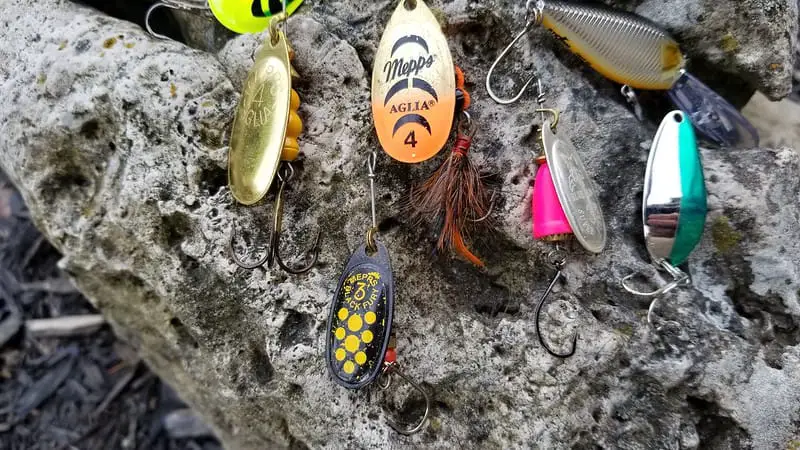
The color of the spinner plays a significant role in triggering a strike response in trout. However, the best color spinner for trout actually depends on their mood, the water clarity, and even light conditions.
For me, silver, gold, and brightly colored spinners with reflective surfaces tend to be my most effective colors because they create flashes that can be seen from a distance.
Black spinners or black/silver combinations can also be effective in specific conditions. I use black when trout fishing at night, and I will often try black in bright, sunny conditions. I have found that black can be very effective at any time. However, it can also not work depending on the mood of the trout.
Other great spinner colors for trout fishing include chartreuse, chartreuse/silver, silver, silver/orange, green/silver, and blue/silver. Chartreuse and Orange are my best colors in dirtier water. Experimenting with different colors based on the prevailing conditions can help increase your chances of success.
What Size Spinners Are Best For Trout?
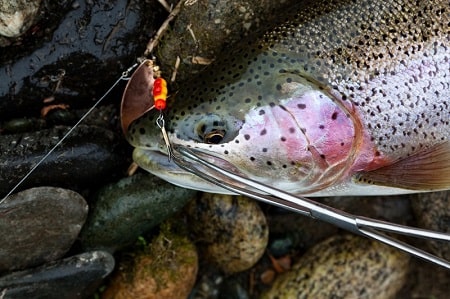
Most spinners are rated by blade size so the best blade size ranges from size 1 to 3. This puts most spinners in the range of 1 to 3 inches.
I have done very well with larger spinners with size 4 and 5 blades, especially in dirtier water and when targeting larger trout.
If your trout stream is full of 5 to 9-inch trout, a size 1 or 2 is best. If the trout are 10 to 20 inches, a size 3 is the best option. Trout over 16 inches will grab large spinners that are 3 to 5 inches long.
Effective Techniques for Spinner Fishing
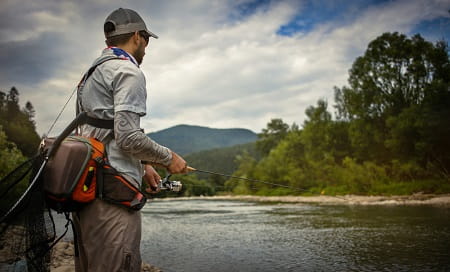
There are four proven techniques that I and other guides use when fishing for trout with spinners.
I have found that using a couple of these can double or triple the amount of trout I and my clients catch.
Straight Retrieval
The basic straight retrieve is the most commonly used technique used when trout fishing with spinners.
Simply cast the spinner across the river or lake as far as possible and retrieve it straight in with a slow and steady retrieve. You can allow the lure to sink a bit, but most anglers don’t.
The downside to this retrieve is that often, the spinner is too high in the water column, and the retrieve is not that enticing to large trout.
The Erratic Retrieve
If you ever watch a tournament bass angler retrieve a lure, they almost always impart action to the lure with rips, twitches, pulls, and pauses. They do this for a reason. Rips pauses, and pulls, imitates injured or dying baitfish, and in the animal kingdom, an injured baitfish triggers far more trout to bite.
To make the basic straight retrieve technique much more effective, which for me means two to three times more trout, I incorporate occasional rips or twitches, lifts, and pauses about every 5 to 10 feet.
I simply reel in and every five to ten feet I use my rod tip to rip, pop, twitch, and pause the spinner. My goal is to make it look like a struggling baitfish and an easy target.
The Swing Technique
This technique is often most effective when fishing for trout in faster currents. I cast the spinner across and slightly downriver, allowing the current to carry or swing the spinner across the pool without reeling at all.
The current itself will spin the blades and cause the spinner to move slowly across the river.
The reason I don’t reel is that the combined speed of the current and reeling at the same time can pop the spinner out of the water, as well as make it too fast for the trout to see and catch the spinner.
Jigging Technique
With this method, I cast the spinner out and across the river, allowing it to sink to the bottom.
I then lift the rod tip from waist high to a few feet over my head, then lower the rod and repeat.
A quick rod tip lift creates an up-and-down jigging motion, simulating an injured baitfish.
The spinner’s fluttering action on the drop can provoke aggressive responses from trout, and the lift generally gets their attention looking like something fleeing.
This technique works well in areas where trout gather, such as beneath waterfalls or behind large obstacles, as well as in pocket water. But the truth is I will use it anywhere, but especially in deep water.
Determining Retrieval Speed And Optimal Depth
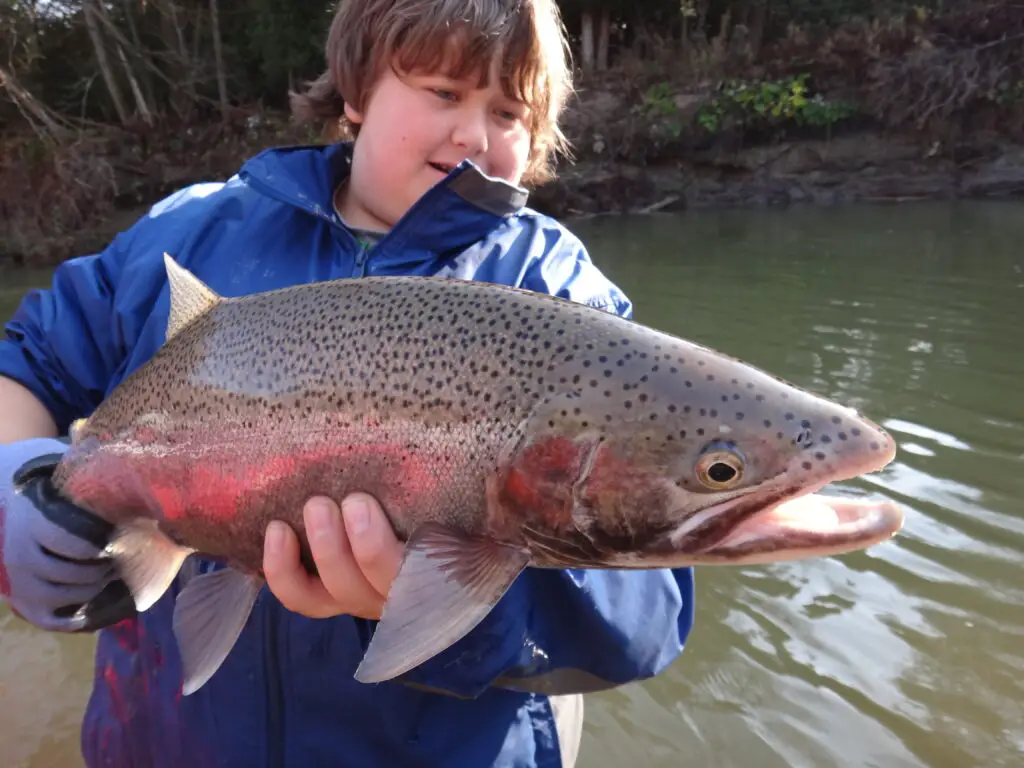
Spinners are great for kids and new anglers because all it takes is a cast and a steady medium-speed retrieve.
The retrieval speed of the spinner depends on its action, the reel speed, and the current velocity.
To achieve the spinner’s optimal spin, I maintain a slow to medium retrieval speed that allows trout to detect, track, and then strike at the lure. If the spinner pops out of the water’s surface, I know I am reeling too fast, or I am holding the rod tip too high. I will adjust my speed accordingly and or lower my rod tip to keep the spinner deeper.
Determining the optimal depth for spinner fishing requires considering the trout’s position in the water column.
I aim for a depth of approximately 2 to 3 feet above the trout’s location.
In clear water, I can extend this distance to 5 to 6 feet, but closer is usually best. The goal is to keep the spinner in the strike zone of the trout, and in most cases, the strike zone for a lure is about 4 to 5 feet, except in dirty water or at night which I’ll discuss below.
Studies indicate that trout feed up about 87% of the time. Therefore, avoid dragging the spinner along the riverbed to prevent snags and maintain its effectiveness.
Fishing High and Low in the Water Column
Trout can be found near the riverbed, but it doesn’t mean that your spinner should be at the same depth. Fishing high or low in the water column depends on the river’s characteristics.
When trout fishing with spinners in shallower rivers or areas less than 6 feet deep, I start reeling as soon as the spinner hits the water to keep the spinner high in the water column.
I adjust my rod tip height to keep the spinner elevated and off the bottom, and within the trout’s strike zone. A waist-high rod tip is usually good. If I am hitting the bottom with the spinner, I lift the rod tip about head height.
In deeper water, I cast across or slightly upriver to achieve greater depth. I allow the spinner to sink before starting the retrieval, and I maintain a slower speed to keep the spinner deep.
If I need more depth with my spinner, I keep my rod tip just above the water. If I want maximum depth, I actually put my rod tip below the surface when reeling in.
If you are not sure how high and how deep you should be fishing, I’ll explain that below.
Covering All Depths of the Water Column
To ensure full coverage of the water column and to figure out how deep I need to get my spinner, I use a systematic approach that allows me to figure out at what depth the trout are feeding at. This is a method I primarily use in bigger deeper rivers and in lakes.
First Cast: Start with the first cast covering the top part of the water column, which means retrieving the spinner as soon as it hits the water which keeps it near the surface. A trout will move 3 to 6 feet up to hit the lure, but if they are 12 feet down, they may not hit the lures on this cast.
Second Cast: On the second cast, I aim for the exact same spot but this time I allow the spinner to sink 3 to 6 feet or for a duration of about 3 to 6 seconds. I then lower my rod tip to the water’s surface or slightly below to keep the lure at that level, which enables me to effectively target the middle or lower part of the water column.
Third Cast: If I haven’t had any success with the first two casts, I will cast again to the exact same spot and let the spinner sink even deeper or all the way to the bottom before starting the retrieval.
Once the spinner reaches the bottom, I quickly lift the rod tip 3 to 6 feet to suspend the spinner about 3 feet off the riverbed. I reel with a low rod tip to maintain this depth.
My goal with these three casts is to find the fish, and or find the bottom.
Casting three times in the same spot over and over takes a lot of time. However, three casts are not always needed.
Pay attention to any bites or bumps during these three casts, as they can indicate the depth at which the trout are actively feeding or holding, or it can indicate the depth of the bottom.
If you get a bite or bump bottom on the high retrieve, unless the river gets deeper in another spot you are probably good to keep the spinner high.
After determining the right depth, just focus subsequent casts on that specific depth. However, often different parts of the pool or river have different depths, so i will occasionally check the depth with three or four casts again to find the bottom.
This methodical approach helps you discover the trout’s location instead of randomly covering a large area of the river and just hoping for a bite. Most anglers miss fish because they fish too high and because they DON’T cover the water very well, which I will discuss how to do below.
Best Casting Direction For Spinner Fishing
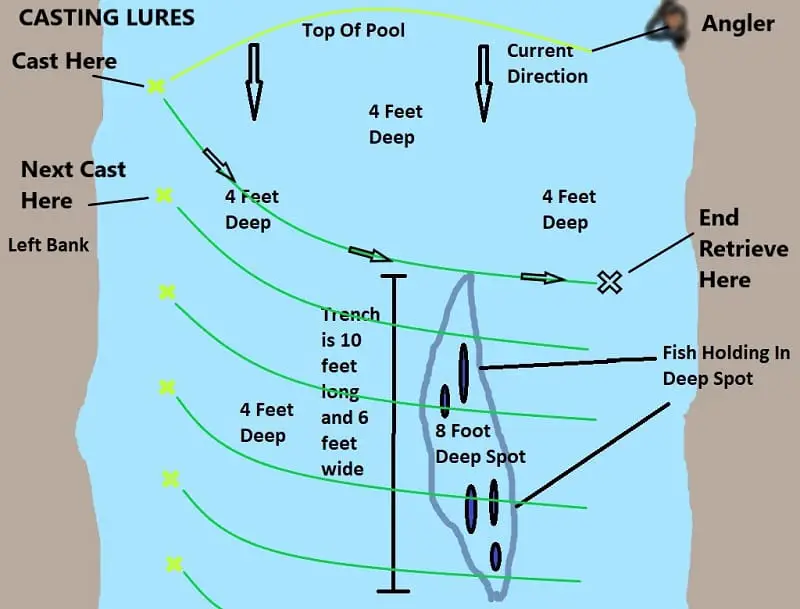
I have determined that casting straight across the river or slightly downriver has proven to be much more effective than casting upriver and retrieving downstream.
Casting across is also much more effective than casting straight downriver and retrieving it up the river.
Casting across the river or at a slight angle downriver allows the spinner to move sideways and across the trout’s field of view, this shows he lure sideways to the fish, which is a larger profile, and since predatory fish prefer to hit their prey from the side or near the head, this sideways receive provides an easier and more enticing target.
This casting direction with a sideways retrieve is almost always my preferred and most effective method.
Effectively Covering The Water With Spinners
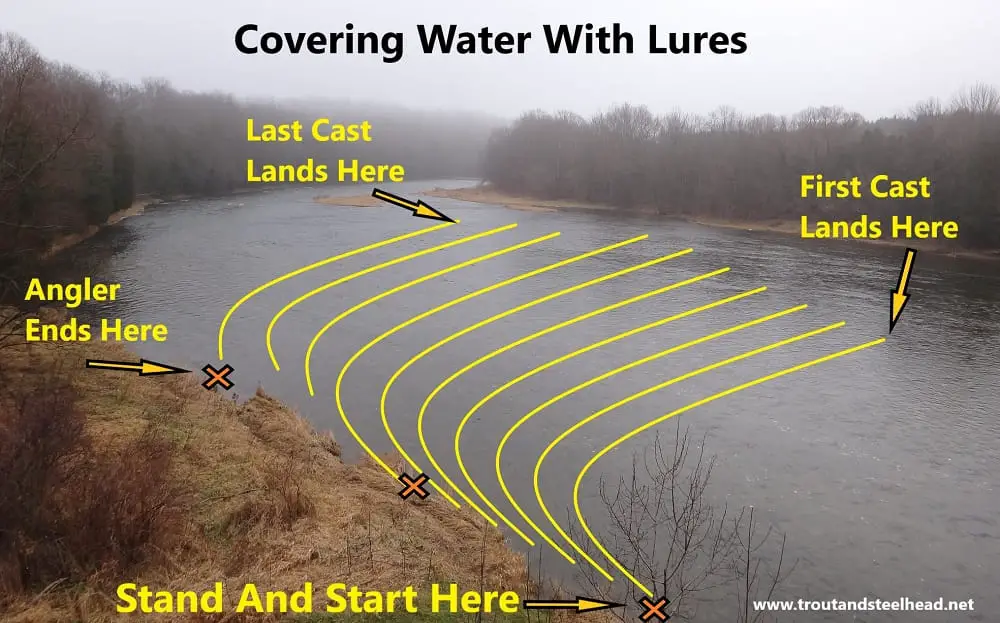
Instead of randomly casting in all directions, which is common practice for most anglers, it’s essential to methodically cover the water from top to bottom, or bottom to top.
To cover each spot from the top to the bottom of the spot, I begin by casing as far across the river as possible and ensure my first retrieval is as far up at the top of the fishing spot as possible. This is the spot where the rapids come in or where I start to see the bottom disappear.
After my first cast, I will move the retrieval down 3 to 5 feet with each consecutive cast.
This approach ensures that every trout in the area has a chance to see and strike at the spinner, leaving no gaps in coverage. It also ensures the trout sees the lure in front of them since almost all trout will be facing upriver.
By employing this systematic coverage technique, I can maximize the chances of attracting and catching trout.
Fishing Bottom To Top
Normally, I prefer to cover the spot from the top of the spot to the bottom of the spot so my lure gets close to each trout from above them and not below them. However, in low clear rivers, or when it’s hard to position my body upriver far enough that I can cast and not spook the fish, I will sometimes start at the bottom, or tail out of the pool and work my way up.
I will cast across the river and retrieve sideways and down the river. I will also spread out each cast 3 to 6 feet.
Since trout almost always face upriver and can’t look behind them, the downside to this option is I have witnessed trout being spooked by the lure moving closely behind them. The trout can feel or sense something is coming, and since the spinner has a lot of vibration and they can’t see it, it can and does spook some trout.
Clear Water Spinner Fishing Tips
When fishing in clear water conditions, there are strategies you can employ to increase your chances of success without alarming the trout. By following these tips, you can make your spinner appear more natural and enticing to the fish.
- Choose the Right Spinner: Opt for silver or brightly colored spinners with reflective surfaces. These create a visible flash that catches the trout’s attention.
- Adjust Your Retrieval Speed: In clear water, try a slightly faster retrieval speed. This allows the trout to spot the lure from a greater distance and gives them more time to react.
- Size and Flash Matter: In shallow clear, water, smaller and less flashy spinners are recommended. This reduces the chances of spooking the trout.
- Mind Your Casting: Avoid casting the spinner too close to the fish or in the middle of the pool. Instead, aim to get it as close to the far bank as possible. Pull the spinner in front of the fish and past it. Remember, anything out of the ordinary can startle trout.
- Be Stealthy: Try not to spook the fish by retrieving the spinner at a slower pace. Fast-moving objects in the water can alarm the trout. So, maintain a natural and slower retrieve to increase your chances of a successful catch.
Dirty Or Stained Water Spinner Fishing Tips
When faced with dirtier or stained water conditions, it’s important to adjust your approach to make the spinner more visible and appealing to the trout.
- Get Closer: In these conditions, it becomes crucial to bring the spinner within a foot or two of the trout. This enhances visibility and increases the chances of a strike.
- Slow Down: Slow down your retrieval speed to accommodate reduced visibility. The trout need more time to locate and strike at the spinner in such conditions.
- Make Some Noise: If the water is very muddy, consider using a spinner with added noise, such as one with a rattle. The noise helps the trout locate and strike at the lure when their sight is compromised.
- Choose Bright Colors: Opt for larger spinners in bright chartreuse colors. These colors provide better visibility in dirty or stained water.
Fast And Slow Water Spinner Fishing Tips
The speed of the current plays a role in determining the most effective spinner fishing techniques. Adjust your strategy based on the water speed to maximize your chances of success.
- Swing Method For Faster Currents: In faster currents, use the swing method. Cast the spinner across the river and let the current carry it downstream. This mimics the movement of a baitfish, attracting the trout.
- Maintain An Appropriate Retrieval Speed: Avoid reeling too quickly in faster currents. Excessive speed can cause the spinner to spin out or become too fast for the fish to detect and strike.
- Slow To Medium-Speed Retrieval In Slow Water: In slower water, a slow to medium-speed retrieval or a jigging retrieval works best. The swing method is less effective here as the slower current may not provide enough speed to spin the blades of the spinner properly, and the slow speed may cause the spinner to hit and drag along the riverbed.
Nightime Trout Fishing With Spinners
Some anglers like to fish the nighttime for trout, and at times, nighttime trout fishing is when the biggest trout will be feeding.
Spinners are one of the best lures for nighttime fishing since they can be fished slowly, they pump out a lot of noise and vibration, and they move straight, which enables the trout to locate and hit the lure easier.
Conditions for Spinner Selection and Fishing Tactics
Having a good understanding of river conditions is crucial for adapting your fishing tactics when using spinners for trout.
Factors such as water depth, current speed, water clarity, presence of structure such as rocks and logs, and the width of the river all influence trout behavior and should guide your approach.
Remaining flexible and adjusting your strategies accordingly will significantly increase your chances of success.
Tight Lines,
Graham

Dear Graham,
Hi!
Thank you very much for sharing your valuable experience. i am fan of spinner spinning for trout fishing and want to ask do you recommend flourocent spinner for night trout fishing? what do you recommend when trout jumping and feeding on surface (evening) ?
Regards,
Reza
Hey Reza,
There are two line of thought when lure fishing at night, the first is use a bright colored fluorescent lure with the belief brigher lurs can be seen by the fish better. In some cases such as bright moonlight this might be trout. However, its the light that makes bright things bright, without the light they ar enot so bright so do they really stand out at night. I used to think this way, until a wise fisherman told me his best lure color at night is black.
I’ve experimented with black lure even on the darkest night and surprisingly in my opinion black has been my most effective color at night. It is so effective for me that I’ve spray painted some of my spinner all black and I use them primarily at night. I’m not sure if it provide a better silhouette to the fish but regardless I would recommend trying black and fluorescent to see what works best for you, and then, please report back and let me know how it works for you.
Best of luck,
Graham
Dear Graham,
Hello, Thank you for your comprehensive answer. i read night trout fishing article and your answer carefully. i am planning for trout fishing with next two weeks i already bought mepps #3 willow blade , aglia #5 in black to particularly try your recommendation also i prepared some top water lures to test. will let you know the result.
Regards,
Reza
Best of luck Reza.
Dear Graham,
Hi, I mostly go fish in lake for trout and one of my serious challenge is number of missed fish when bite the spinner, start to jump out however I try to keep rod tip down to avoid surface jump but number of missed fish due to fish jumping is noticeable do you have any recommendation?
Regards,
Reza
Hey Reza,
Trying to prevent them from jumping is a good start, while most anglers set the hook and keep the rod tip high, if you watch, many pros will keep the rod tip low and horizontla and even close to the water to prevent loosing fish.
Other than that, try these tips.
– Barbed hooks help.
– A larger hook gap might also help. A bigger short shank treble hook will rip out less.
– Believe it or not, a wide gape single hook might also help.
– Sometimes hooks rip out. Therefore, I always maintain pressure but I lighten the pressure when the fish starts its run by moving my rod tip out toward the fish and then back again when it slows down. Bigger hooks rip out less.
And lastly, get the fish in within a reasonable amount of time, the more the fish twists and jumps the more likely the hook will rip out. On the reverse, too much pressure can also rip out hooks, so, there’s a fine line horsing in a fish and plating it for too long.
Hope that helps buddy,
Graham